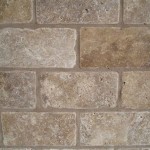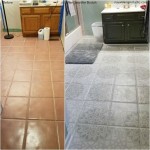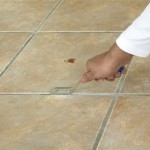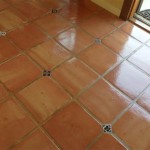Using Construction Adhesive For Floor Tile Installation
When it comes to laying floor tiles, there are several methods available, each with its own set of advantages and disadvantages. One common method involves the use of thin-set mortar, a cement-based mixture that adheres both to the tile and the subfloor. Another method utilizes construction adhesive, a specialized glue that offers benefits in specific scenarios. This article delves into the use of construction adhesive for floor tile installation, highlighting its applications, benefits, and considerations.
Understanding Construction Adhesive
Construction adhesive, also known as tile mastic, is a polymer-based adhesive designed for bonding various materials, including tile, to a range of substrates. It comes in different formulations, including solvent-based, water-based, and moisture-cured, each suited for specific applications. The most common type used for tile installation is the moisture-cured polyurethane adhesive, which offers high bond strength and flexibility.
Construction adhesive is typically applied as a thin layer to the substrate, creating a strong bond between the tile and surface. While it may seem like a simple solution, selecting the appropriate adhesive and applying it correctly is crucial for achieving a successful installation.
Benefits of Using Construction Adhesive
Construction adhesive offers several advantages over traditional thin-set mortar, making it a suitable option for specific projects. Here are some key benefits:
1. Faster Installation
One of the primary advantages of construction adhesive is its speed of application. Unlike thin-set mortar, which requires a setting time of several hours, construction adhesive dries quickly, allowing for faster installation. This is particularly beneficial for large projects or when time is a critical factor.
2. Enhanced Flexibility
Construction adhesive provides a flexible bond, making it ideal for substrates prone to movement or expansion. This flexibility is particularly important for installations on plywood, concrete, or other surfaces that may experience slight shifts. It helps to minimize cracking or delamination of tiles.
3. Reduced Thickness
Construction adhesive is applied as a thinner layer compared to thin-set mortar. This reduced thickness allows for a seamless installation, especially in areas with limited space or where the subfloor is uneven. It minimizes the need for extensive surface preparation, saving time and effort.
Considerations for Using Construction Adhesive
While construction adhesive is a valuable tool for tile installation, it's essential to consider its limitations and understand when it is not the most suitable option.
1. Substrate Compatibility
Not all construction adhesives are compatible with all substrates. It's crucial to carefully read the manufacturer's instructions and ensure the chosen adhesive is suitable for the intended surface. Some adhesives may not bond effectively to porous surfaces like drywall or certain types of concrete.
2. Weight Limitations
Construction adhesive is generally not recommended for large, heavy tiles or installations subjected to significant weight or impact. Thin-set mortar offers greater holding strength and stability for such applications.
3. Temperature Sensitivity
Construction adhesive is sensitive to temperature fluctuations. Extreme temperatures can affect its bonding properties and may require special handling or application techniques. It's essential to consult the adhesive manufacturer's recommendations regarding temperature limitations.
4. Moisture Control
Moisture-cured polyurethane adhesives require moisture to cure properly. Therefore, it's important to ensure adequate humidity levels during and after installation. Excessive moisture can compromise the bond, while inadequate humidity can delay curing and weaken the adhesion.
In conclusion, construction adhesive offers a viable alternative to thin-set mortar for floor tile installation, particularly in situations where speed, flexibility, and reduced thickness are critical. However, careful consideration of substrate compatibility, weight limitations, temperature sensitivity, and moisture control is essential for successful installation.

How To Use Tile Adhesive And Its Types Roff

Natural Stone Tile Adhesive Building And Construction Adhesives Adhesivesandoatings Com

Can You Use Construction Glue For Tile Homey Sealant And Adhesive

How To Install Tiles Using Tile Adhesive Expert Step By Guide

S Uses Of Construction Adhesives

Choosing The Right Tile Adhesive For Construction Projects

Which Are The Best Floor Tile Adhesive Used For Tiling

Floor Tile Adhesive Best Type For Each Case

Floor Tile Adhesive Best Type For Each Case

Tile Adhesive Ready Mixed Or Powder Sts
Related Posts







